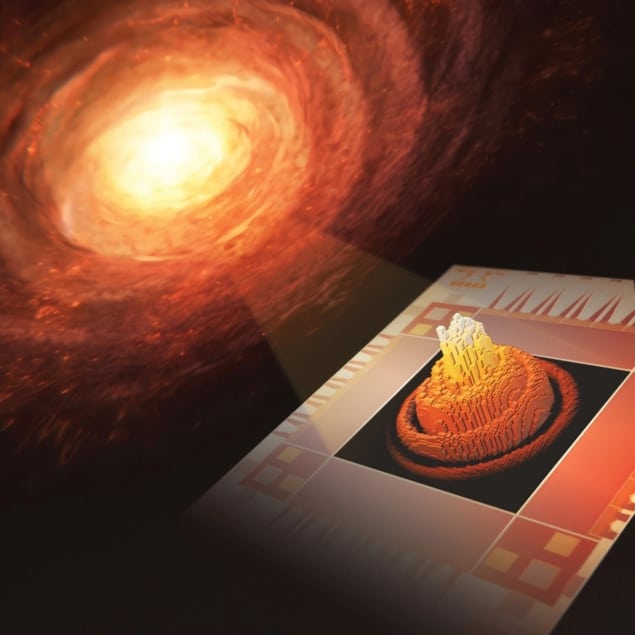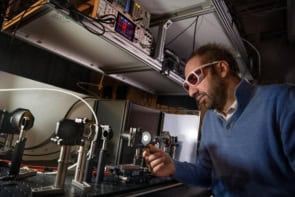
The highest resolution to date in a superconducting nanowire single-photon detector (SNSPD) camera has been claimed by researchers in the US. Designed by a team at the National Institute of Standards and Technology (NIST) and NASA’s Jet Propulsion Laboratory, the camera offers a pixel count some 400 times higher than other state-of-the-art designs, without sacrificing any of their advantages.
First demonstrated two decades ago, SNSPDs have transformed our ability to capture images at extremely low light levels. They feature square-grid arrays of intersecting nanowires cooled to just above absolute zero. Each wire carries an electrical current at just below the critical current at which superconductivity is destroyed.
When a nanowire is struck by a single photon, the heat it absorbs will temporarily shut down the superconductivity until the energy has dissipated. This causes the current to be shunted to small resistive heating elements positioned at the nearest intersections between perpendicular nanowires – each connected to their own separate readout lines. The signals from these readouts act as individual pixels, indicating each photon’s location of detection.
“SNSPDs have some very appealing characteristics,” explains team leader Bakhrom Oripov at NIST. “They work for any [photon] wavelength up to 29 mm (not true for many other silicon technologies) and have demonstrated detection efficiencies of 98% at 1550 nm. They also have very low uncertainties in photon arrival times (timing jitter) and have extremely low false detection rates (dark counts).”
Resolution limitations
Despite these advantages, the need for independent readout wires for each pixel has made it difficult to scale-up SNSPDs to create larger detectors. So far, this has meant that even the highest-resolution devices have little more than 1000 pixels.
Oripov’s team took a different approach to detector design and this allowed them to detect photons using readout lines arranged parallel to the nanowires in each row and column.
“Instead of using direct electrical signal readout from detectors, we first transduce that electrical signal into heat in the readout line (generated by a resistive heating element) and use it to trigger counter-propagating electrical pulses in the readout line,” Oripov explains.
By comparing the arrival times of these pulses at each end of a readout line, the camera can then pinpoint precisely where along the nanowire the photon was absorbed. In this way, a pixel is generated at the point where the photon absorption site detected in one row intersects with a detection in a perpendicular column.
Fewer readout lines
In contrast with previous designs – where a total of N2 readout lines were required to monitor an array of N×N nanowires – this new design can build up single-photon images with just 2N readout lines.
As Oripov describes, this improvement will make it vastly easier for the team to improve resolution in their design. “We showed we can indeed scale to large number of pixels without sacrificing other properties such as single photon sensitivity, readout jitter and dark count,” he says.

New photon detector accelerates quantum key distribution
Their device achieved a pixel count of 400,000 – some 400 times higher than existing state-of-the-art designs. But with further improvements, they are confident that this number could be increased. If achieved, this would pave the way for a new generation of large-scale SNSPDs, suitable for single-photon imaging across a broad band of the electromagnetic spectrum.
Already, Oripov envisages a diverse range of possibilities for the new technology: from improved astronomy techniques for investigating dark matter and mapping the early universe, to new opportunities for quantum communications and medical imaging.
“It seems like with this result, we got the attention of a few astrophysicists and biomedical imaging people, all interested in collaborating and making better imaging tools,” he says. “That’s certainly an exciting moment both for our team and our colleagues in the field of SNSPD research in general.”
The new detector is described in Nature.



